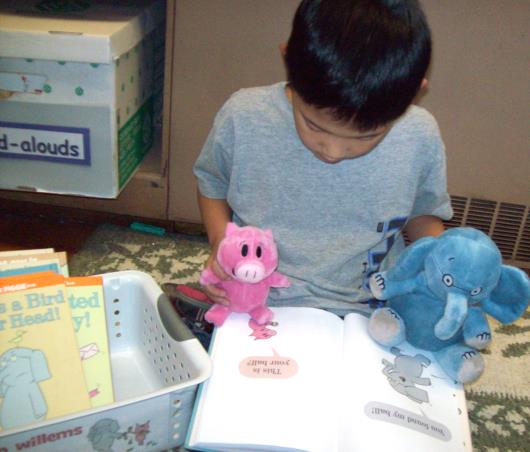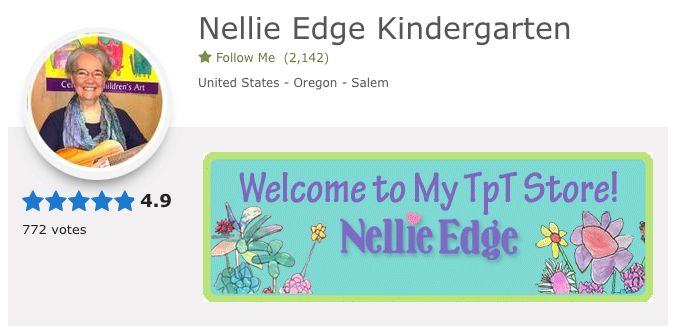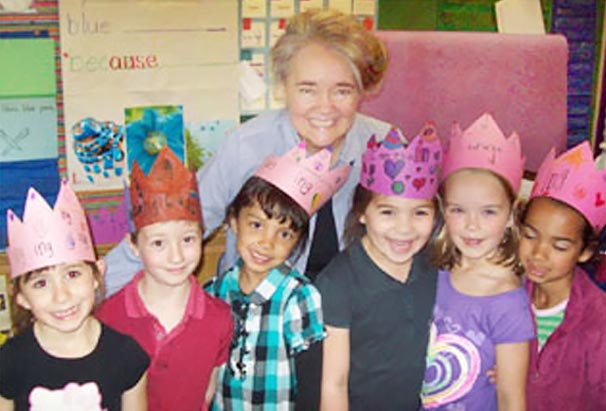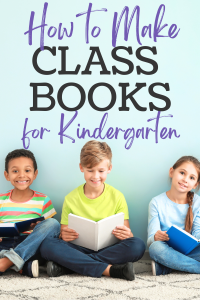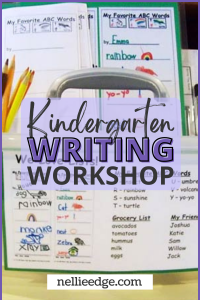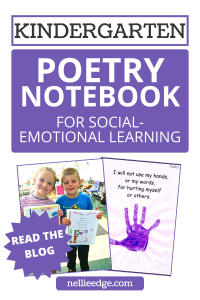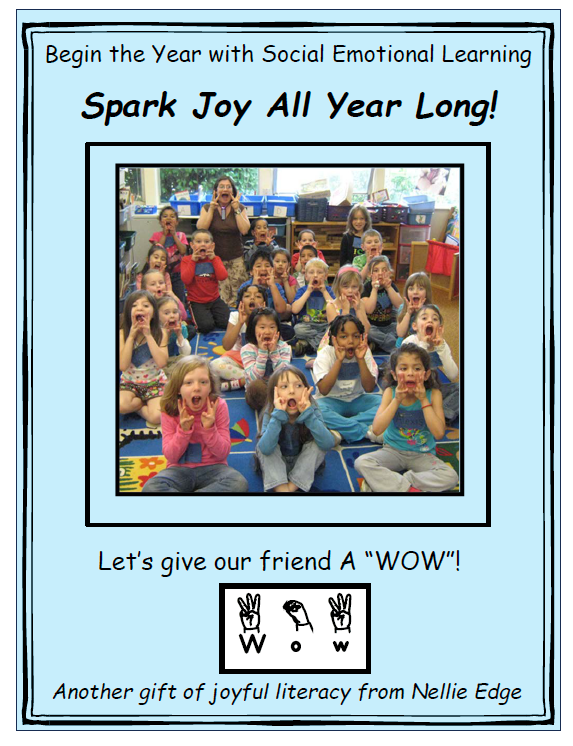Glimpses of kindergarten life with retired teacher Laura Flocker from September through May: An Oregon Model of Excellence (last printed in 2020)
This is what we know for sure:
Provide explicit, systematic instruction in seeing and drawing like an artist. Introduce children to lines and rich vocabulary the first week of school with crayons and markers. Use multisensory ABC and Phonics Immersion, and teach develop high-frequency “heart words”., and teach children to draw. Connect children to the natural world outside the classroom. Give children songs, poems, and rhymes to memorize, perform, illustrate and read. The result? Happy engaged readers and writers who meet—or exceed—Common Core State Standards (CCSS).
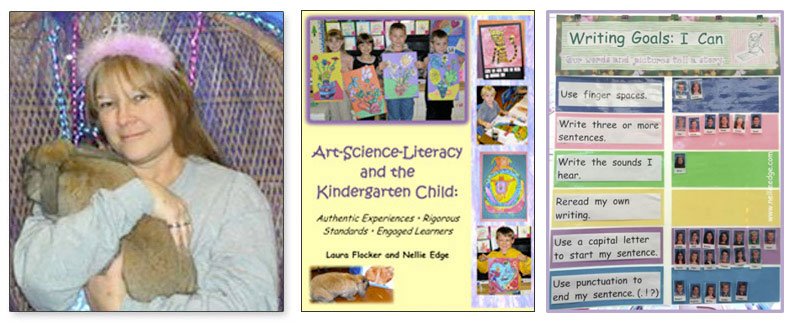
Provide explicit, systematic instruction in seeing and drawing like an artist.
Introduce children to lines and rich vocabulary the first week of school with crayons and markers.
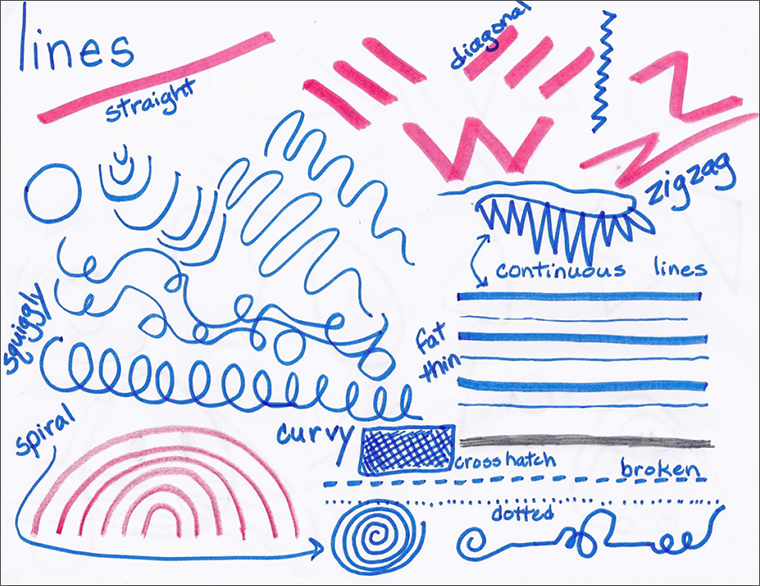
Use fat lines, thin lines, straight and curved lines, horizontal and diagonals. Make shapes in different positions.
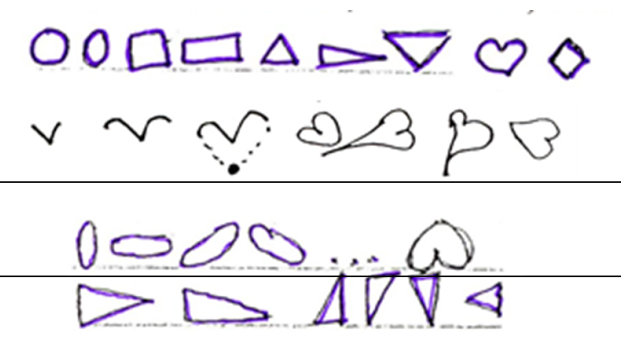
Use fat lines, thin lines, straight and curved lines, horizontal and diagonals.
Make shapes in different positions.
Give children songs and poems to memorize, illustrate and read.
Music is an integral part of kindergarten life. Children illustrate their poetry and songs for “I Can Read” Anthology Notebook Collections.
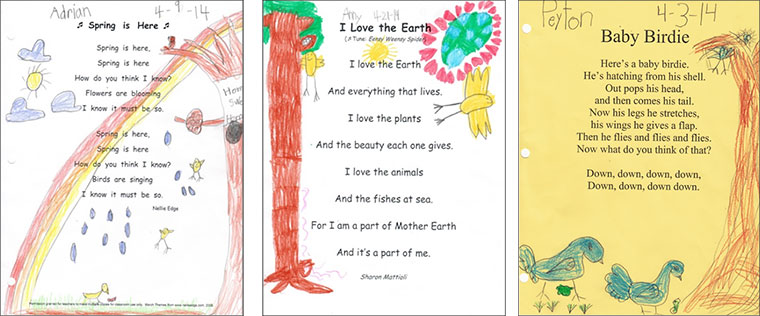
Writing and drawing are reciprocal sign/symbol systems
Children also illustrate their Sing, Sign, Spell, and Read! pages for their Anthology Notebooks
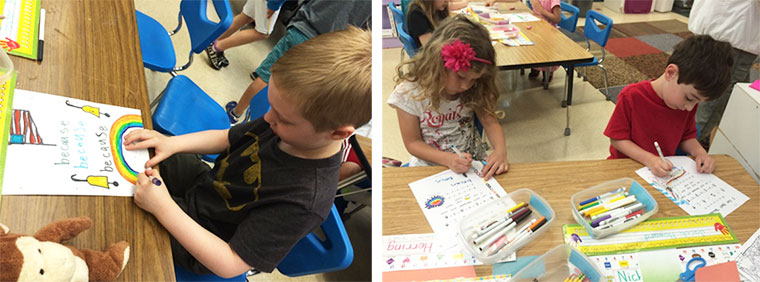
You will remember the word “because” forever.
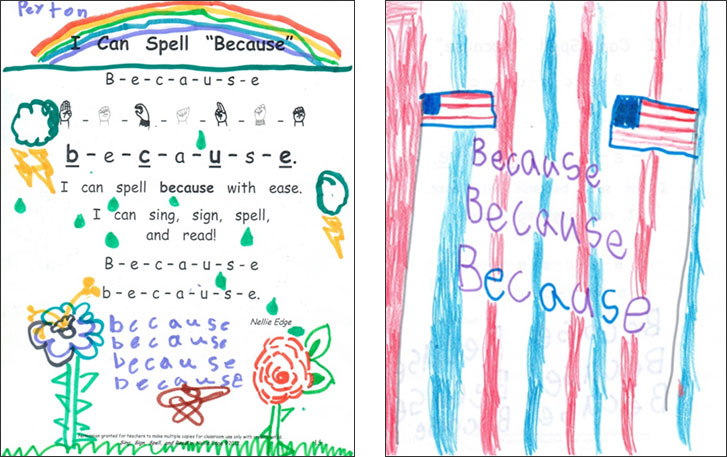
Errol is the bunny who lives in Kindergarten:
He is simply a part of the learning community: Errol has a mailbox, and children write to their bunny friend.
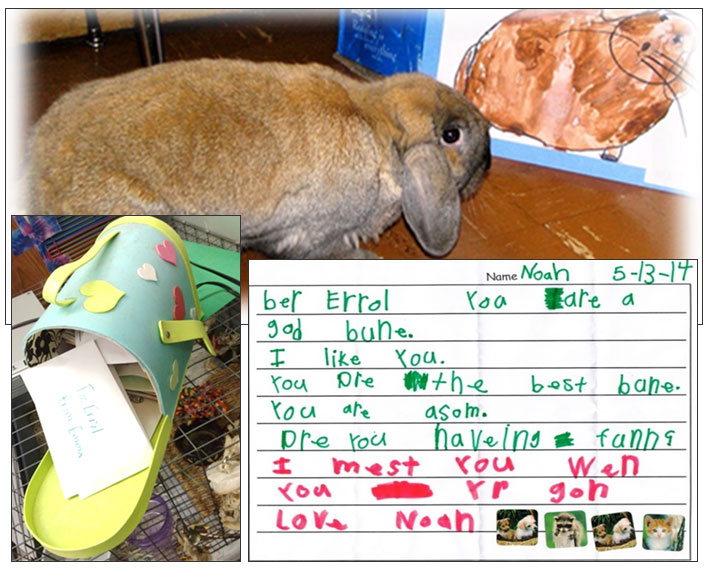
More magical invitations to write letters:
Shhh… Don’t disturb the fairies
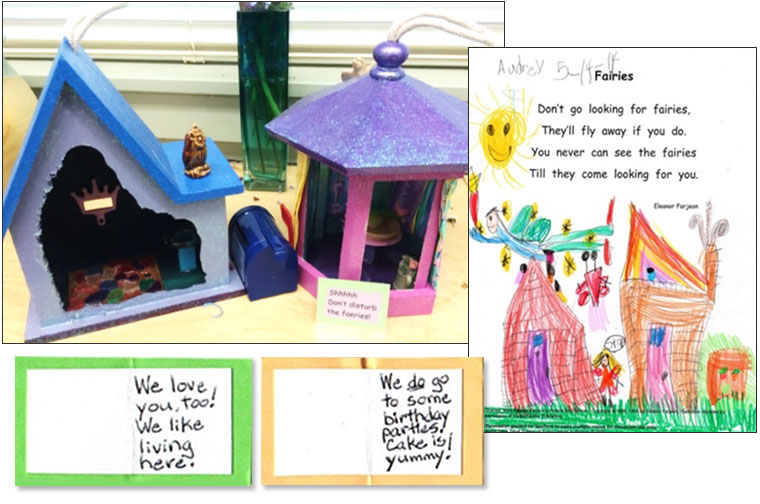
We memorize, recite, illustrate, and read Small Poems of Some Delight to enrich the curriculum.
Teaching children how to use speech and thought bubbles provides new tools to engage the imagination.
Here’s a baby birdie … is a favorite kindergarten song and musical drama all year long.
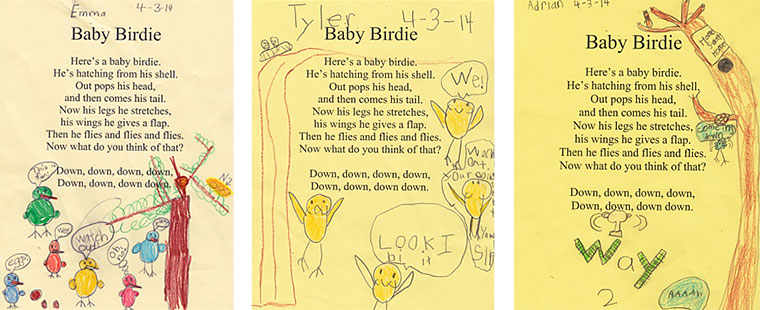
Prepared writing totes are invitations to write books.
Children independently write books about science studies and literature themes. They are fascinated to learn about animals and study nonfiction.
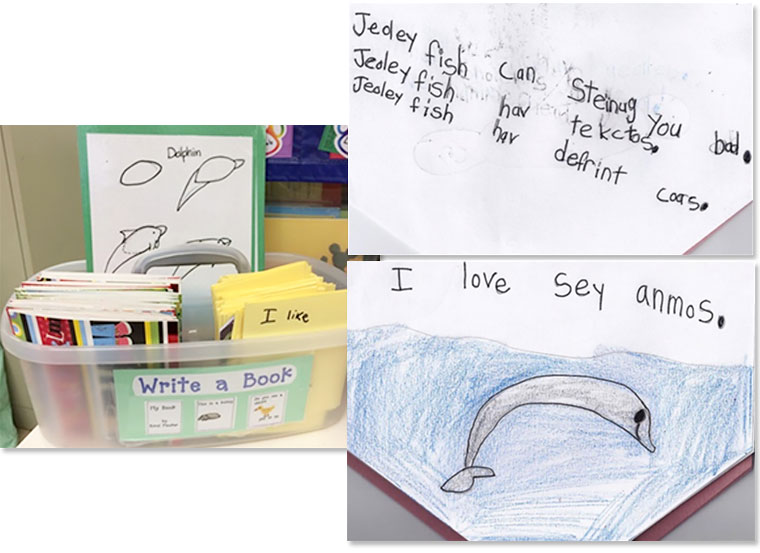
Mo Willems’ Elephant and Piggie Books become mentor texts.
Children try on the author’s voice and the personas of Elephant and Piggie. They learn how to draw these beloved characters. Laura’s classroom is where our first “Elephant and Piggie Family Book Club” had its beginning.
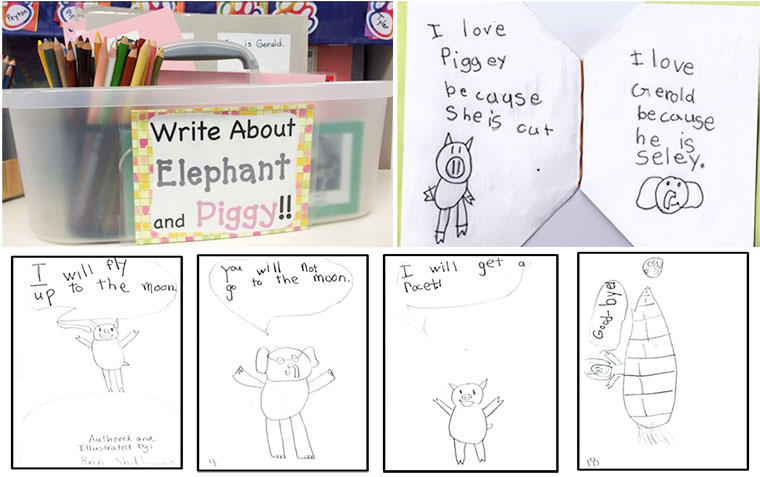
Published books feature kindergarten authors and illustrators
Children love to read books from fellow authors and buddies
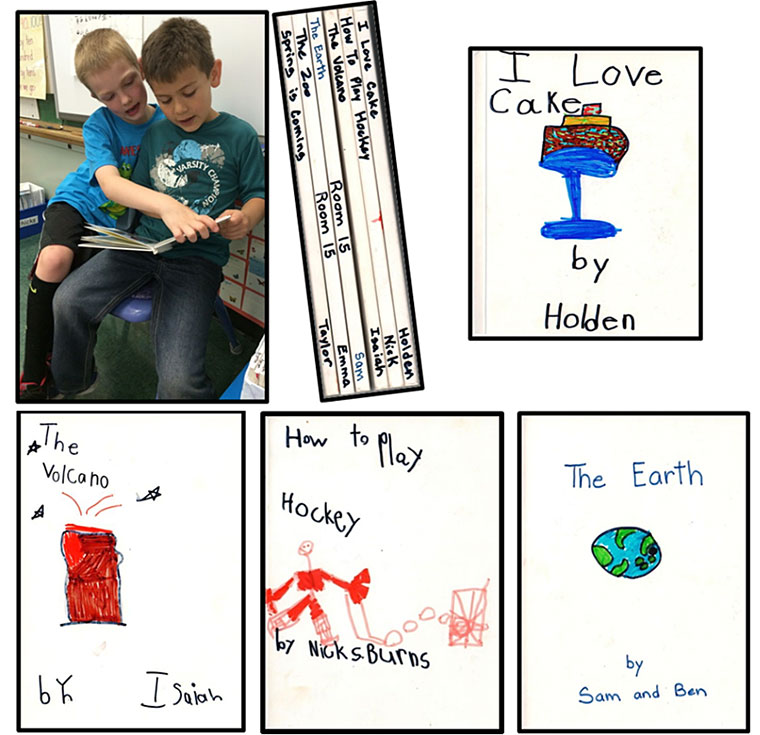
A comprehensive “Parents As Partners” program culminates in family art night in the hall outside of kindergarten… and in celebrating the rich art, science, and literacy documentation from this joyful classroom.
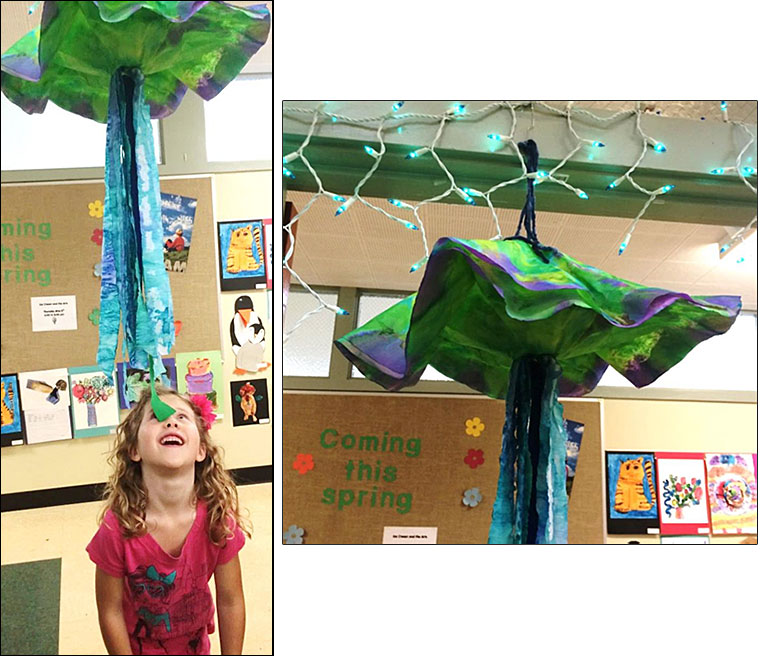
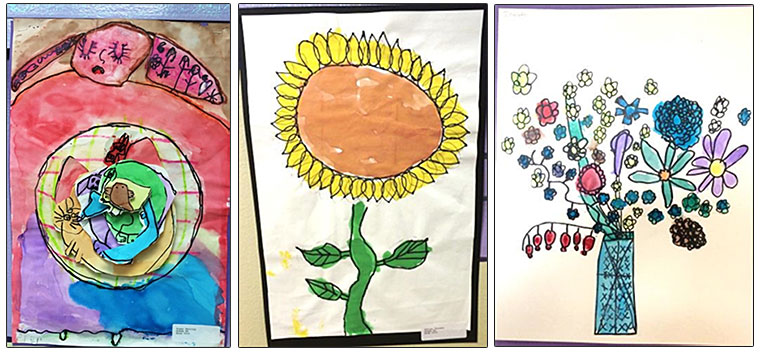
Rigorous State Kindergarten ELA Writing Standards are absolutely possible! Learn more about Joyful Pathways to Accelerated Literacy in kindergarten: Multisensory, authentic, teaching and learning. Peruse our website!
“I know well that only the rarest kind of best in anything can be good enough for the young.” Walter de la Mare, BELLS OF GRASS
My blogs are opportunities to share with a wider audience about the joyful, accelerated literacy strategies shared in our professional development seminars and presentations. I have documented the work of master teachers who create deep, meaning-centered learning—infused with music, art, drama, dance, and sign language. A special “thank you” to Laura Flocker



